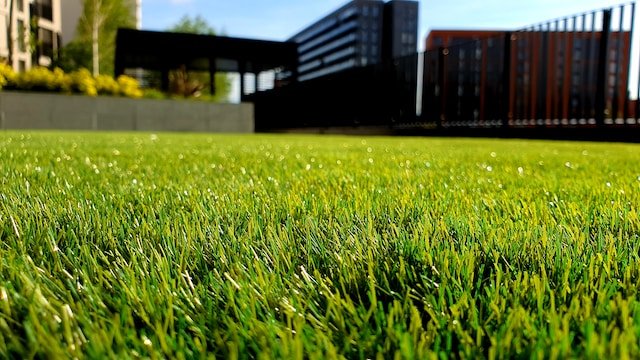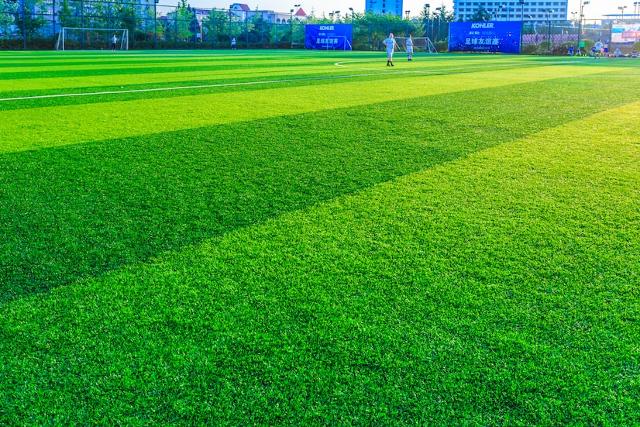The world of football is wide and varied, and people come at it from many different angles. From studying team lineups to comparing artificial turf with natural grass. The latter discussion has become increasingly relevant for owners of outdoor spaces, due to technological advancements and environmental awareness. In this article, we discuss both options, to determine which one emerges as the superior choice.
Environmental Impact
Natural grass is often touted as the more eco-friendly option because it contributes to oxygen production and carbon dioxide absorption. It also benefits overall biodiversity, making it ideal for keen gardeners and landscapers. However, the maintenance of natural grass involves water consumption, fertilizers, and pesticides. Unfortunately, all of these things have their own environmental drawbacks.
On the other hand, artificial turf is manufactured using synthetic materials. These are often derived from petroleum-based products. The production process – and disposal of artificial turf – can both contribute to environmental pollution. Additionally, there are concerns regarding the heat-absorbing properties of artificial turf. These may contribute to the urban heat island effect in densely populated areas. Striking a balance between the two options requires a careful evaluation of local environmental conditions and sustainability goals.
Maintenance and Upkeep
Natural grass demands regular maintenance, including mowing, watering, and pest control. The amount of maintenance required can vary, depending on factors such as climate, soil type, and the desired aesthetic. Some people may appreciate the therapeutic aspects of mowing a lawn. However, others might find the upkeep time-consuming, tiring, and costly. Artificial turf, on the other hand, is often considered low maintenance. It doesn’t require mowing and watering, or the application of fertilizers and pesticides. However, periodic cleaning and grooming are necessary to prevent the buildup of debris, mold, and unpleasant odors.

In terms of maintenance, the choice between natural grass and artificial turf often comes down to personal preference. The decision will be influenced by available resources and the desired level of engagement with outdoor upkeep. If you want to discover more about this aspect, it’s worth doing further Internet research. You’ll find that astro turf used on football pitches is low maintenance, playable in all weather, and FIFA accredited. It’s suitable for professional football clubs, schools, recreational facilities, and community sports organizations.
Durability and Longevity
These two factors are crucial, especially for areas subjected to heavy foot traffic or intense sports activities. Natural grass can withstand a certain level of wear and tear. However, it may struggle to recover from extensive use or adverse weather conditions. Additionally, certain grass varieties may be more resilient than others.
Artificial turf is designed to withstand heavy use and adverse weather conditions. It offers a consistent playing surface for sports, making it a popular choice for athletic fields. While artificial turf has a longer lifespan than natural grass, it isn’t immune to wear and tear. Factors such as UV exposure and the quality of installation can impact its durability. Ultimately, your choice will depend on the intended use, and the level of stress the surface will endure.

Aesthetic Appeal
The visual appeal of a lawn or sports field is a subjective matter. Natural grass is celebrated for its lush, organic appearance. It can easily enhance the overall aesthetics of the space in which it grows. Think about the color variations, textures, and seasonal changes in natural grass. All these elements can contribute to a dynamic and visually pleasing environment.
Artificial turf, on the other hand, offers a consistent and uniform appearance throughout the year. Some people may appreciate its manicured look. In contrast, others may find it lacks the charm and authenticity of natural grass. Interestingly, you can buy astro turf that’s designed to replicate the look and feel of natural grass. Ultimately, the choice between the two often boils down to personal preferences. You also need to consider the design goals and the intended use of the space.
Cost Considerations
The initial installation cost of artificial turf is often higher than that of natural grass. This is understandable, considering the materials used, and the professional installation required. However, artificial turf eliminates the ongoing costs associated with natural grass maintenance. There’ll be no future water bills, lawn care equipment, or landscaping services required. As we’ve just said, natural grass will be initially less expensive. However, it will require ongoing investments in terms of water, fertilizers, pesticides, and equipment.
Additionally, the time spent on maintenance can have indirect costs – especially for businesses or sports facilities. If you work for yourself, you won’t be able to earn money and care for your lawn at the same time. The decision between artificial turf and natural grass involves weighing upfront expenses against long-term savings. It’s also important to assess the budget constraints of the project or property owner. If you have sufficient funds upfront, you could consider installing artificial turf. If not, natural grass will be the cheapest option initially.
Health and Safety Concerns
Health and safety considerations are paramount, particularly for sports fields and playgrounds. Natural grass, when properly maintained, provides a soft and forgiving surface. In turn, it reduces the risk of injuries during falls or athletic activities. However, certain grass varieties may harbor allergens. Additionally, the use of pesticides can pose health concerns.
Artificial turf has a consistent and shock-absorbing surface. This makes it ideally designed for minimizing injuries. However, some concerns have been raised regarding the heat retention of synthetic materials – especially in warmer climates. The heat generated by artificial turf can pose health risks. This applies particularly to athletes during intense physical activities. It’s wise to strike a balance between safety and practicality. This will involve careful consideration of the intended use and the local climate. You also need to consider any available technologies to mitigate potential risks.
In the perennial debate of artificial turf versus natural grass, there’s no one-size-fits-all answer. The choice between the two rests on a plethora of factors. Ultimately, the decision should align with the specific needs and goals of the project or property owner. A balance should be struck between environmental sustainability, functionality, and aesthetics.


